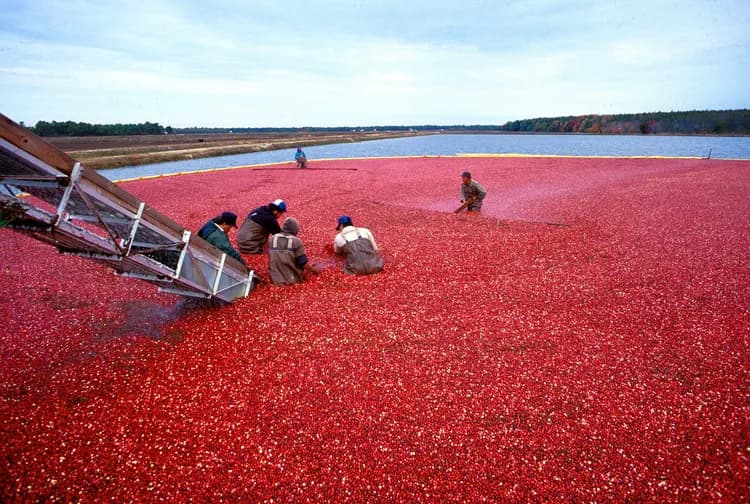Cranberries are a group of evergreen dwarf shrubs or trailing vines in the subgenus Oxycoccus of the genus Vaccinium. The fruit, initially white, is a berry that is larger than the leaves of the plant but turns dark red when fully ripe. It is edible, with an acidic taste that can overpower the sweetness. Because of the pungent acidic taste, most cranberries are processed into products like juice, sauce, jam, and sweetened dried cranberries.
Here are 7 health benefits of cranberries.
1. Cranberries can help prevent urinary tract infections.
The cranberry is probably best known for its role in preventing urinary tract infections (UTIs), especially for those with recurrent infections. Urinary tract infections refer to the existence of certain microorganisms in the urine that exceed normal levels. These infections can develop in the bladder and cause kidney or bladder infections. Studies have shown that the higher levels of proanthocyanidins in cranberries help reduce the linkage of certain bacteria to the urinary tract walls, fighting off infections.
2. Cranberries can contribute to improving cardiovascular health.
Atherosclerosis is the accumulation of plaque containing cholesterol and lipids in arterial walls. Atherosclerosis causes cardiovascular disease that leads to heart attacks and stroke. Cranberries have compounds called flavonoids, which have antioxidant properties. This prevents plaque build-up and reduces blood pressure.
3. Cranberries can help your body fight against cancer.
Cranberries contain proanthocyanidins, which inhibit the growth of a variety of cancer cells. A study from the University of Athens has suggested that diets rich in flavonoids play a fundamental role in reducing the risk of cancer and cancer death.
4. Cranberries can help prevent tooth decay.
Research from the Universite Laval suggests that cranberry juice prevents tooth cavities. Proanthocyanidins, found in cranberries inhibit harmful bacteria from attaching to the teeth. Proper oral hygiene practices interfere with microbial mechanisms, along with increased consumption of cranberries.
5. Cranberries may help treat and prevent peptic ulcers.
Peptic ulcers are caused by a type of bacteria called Helicobacter pylori. This bacteria attacks either the stomach lining or the lining of the first part of the small intestine. Cranberries are rich in compounds like anthocyanins, flavonols, and proanthocyanidins, which inhibit the growth of H. pylori.
6. Cranberries can fight lung inflammation.
Cranberries have a compound called nondialyzable material that prevents the influenza virus from attaching to the cells, preventing infection.
7. Cranberries can help keep homocysteine levels down.
Homocysteine is a byproduct in the blood when methionine is broken down in the body. Elevated homocysteine levels can be the root of many serious body problems like the damage of blood vessels, clotting of blood in the veins, and atherosclerosis, which can all further lead to heart problems. Cranberries are abundant in the B-vitamin complex. B-vitamins, especially folate, vitamin B6, and vitamin B12 are essential for converting homocysteine into the safer and more available amino acid, cysteine.
Related Articles
Test Your Knowledge
Asked by users
Related Centers
Related Specialties
Related Physicians
Related Procedures
Related Resources
Join DoveHubs
and connect with fellow professionals


0 Comments
Please log in to post a comment.